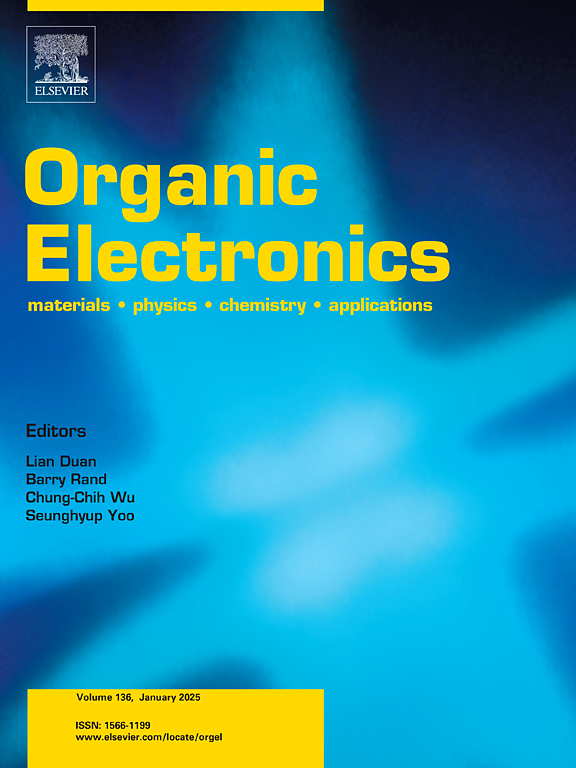可能不受电极影响的激子扩散长度的测定和与电荷有关的误差
IF 2.6
4区 工程技术
Q3 MATERIALS SCIENCE, MULTIDISCIPLINARY
引用次数: 0
摘要
激子扩散长度是有机半导体薄膜的关键参数之一,对优化有机光电器件的性能起着重要作用。现有的测量激子扩散长度的光电子方法采用垂直二极管结构,由于电极和电荷相关的效应,如金属/有机界面附近激子的淬灭增强以及电荷-激子相互作用导致激子湮灭,可能导致测量结果不准确。本文提出了一种测量激子扩散长度的新方法,即将测试有机薄膜集成到有机光电晶体管中。在器件样品中,测试有机膜没有电极接触和电场,使测量没有与金属电极影响有关的误差。更重要的是,在我们的方法中,激子的产生和扩散与光载流子输运完全隔离,消除了与电荷-激子相互作用相关的误差。为了验证,测定了酞菁锡(SnPc)薄膜的激子扩散长度为14.03±2.76 nm,与文献报道的结果吻合较好。本文章由计算机程序翻译,如有差异,请以英文原文为准。

Determination of exciton diffusion lengths potentially free from electrodes and charge related inaccuracies
Exciton diffusion length is one of the key parameters of an organic semiconductor thin film, and plays an important role in optimizing the performance of organic optoelectronic devices. By the existing photoelectronic methods for measuring the exciton diffusion length, vertical diode structure is used, which may lead to inaccuracies resulting from the electrode and charge related effects, such as enhanced quenching of excitons near the metal/organic interface and annihilation of excitons via charge-exciton interaction. Herein we propose a novel method for measuring the exciton diffusion length by incorporating the testing organic film into an organic phototransistor. In the device sample, the testing organic film is free from electrode contact and electric filed, enabling measurement free from errors related to the effects of metal electrodes. More importantly, in our method the generation and diffusion of excitons is fully isolated from photocarrier transport, eliminating the error associated with charge-exciton interactions. For demonstration, the exciton diffusion length of tin phthalocyanine (SnPc) thin film was determined to be 14.03 ± 2.76 nm, which is in good agreement with that reported in literatures.
求助全文
通过发布文献求助,成功后即可免费获取论文全文。
去求助
来源期刊

Organic Electronics
工程技术-材料科学:综合
CiteScore
6.60
自引率
6.20%
发文量
238
审稿时长
44 days
期刊介绍:
Organic Electronics is a journal whose primary interdisciplinary focus is on materials and phenomena related to organic devices such as light emitting diodes, thin film transistors, photovoltaic cells, sensors, memories, etc.
Papers suitable for publication in this journal cover such topics as photoconductive and electronic properties of organic materials, thin film structures and characterization in the context of organic devices, charge and exciton transport, organic electronic and optoelectronic devices.
 求助内容:
求助内容: 应助结果提醒方式:
应助结果提醒方式:


